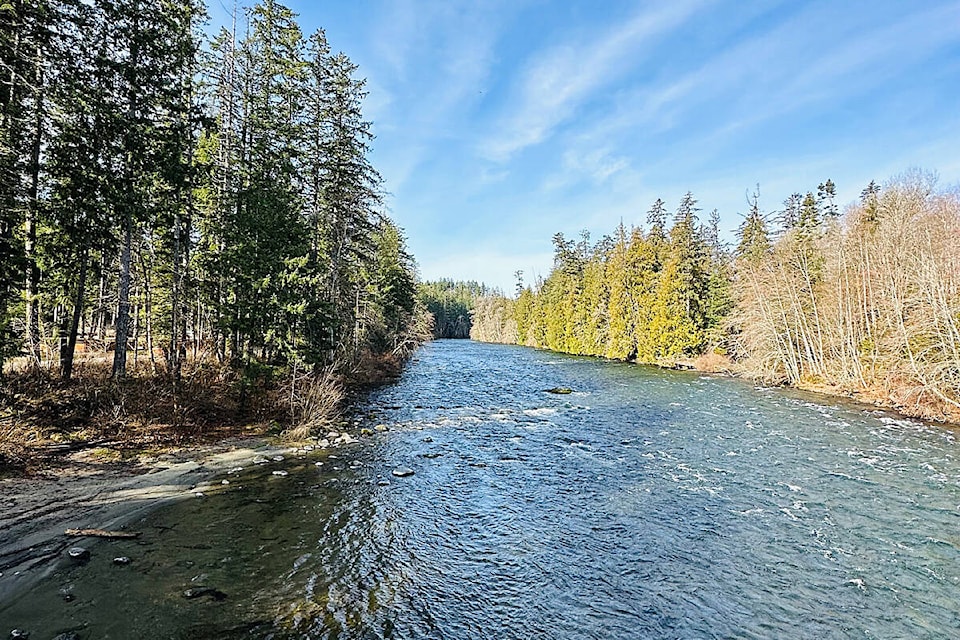We would like to provide a public safety advisory for higher flows within Elk Falls Canyon for steelhead migration and spawning, and an update on the Campbell River water supply forecast.
BC Hydro is set to commence a 15-day fish migration and spawning flow down Elk Falls Canyon to benefit steelhead.
The minimum fish habitat flow down Elk Falls Canyon is four cubic metres per second (m3/s), except between April 1 and 15 when it is 7 m3/s. In the evening of March 30, the base flow will be increased to 7 m3/s with the flow holding there through the morning of April 16.
These flow modifications are intended to help steelhead access good spawning habitat from the generating station up to Elk Falls. This extended migration flow within Elk Falls Canyon follows the two-day steelhead migration and spawning flows of 10 m3/s that have been taking place once per week for five weeks, concluding March 23.
BC Hydro will place temporary safety signage along the trails within the Elk Falls Canyon area and the company asks the public to stay away from the water flow above Elk Falls. People can view the falls from the safety of the suspension bridge and the lookout.
BC Hydro is also issuing an update on the water supply forecast for the Campbell River system for the February to September period. The initial forecast in February showed water inflows into the watershed to be about 90 per cent of normal. The forecast was updated in early March and dropped to 82 per cent of normal.
March, to date, has been well below normal, with water inflows into the reservoirs currently the second lowest in 60 years of record, BC Hydro spokesperson Stephen Watson says.
“Looking at the weather forecast, there’s a chance it may set a new record low,” he says. “This will be the seventh March in a row where water inflow conditions have been lower than normal. The February to September forecast updated in April will likely result in a further reduction.”
Meanwhile, the snowpack is below normal for this time of year, at about 75 per cent of normal, although it generally peaks in April.
BC Hydro was providing a total Campbell River flow of about 80 m3/s though with the drying trend. It reduced the river flow to 70 m3/s on March 9. This was a similar operation to last year when Campbell River was in a dry period in March and conserving water. When the John Hart powerhouse is running at full capacity, the discharge down the Campbell River is about 125 m3/s. Water inflows into the watershed for the month of March have been around 20 m3/s.
Upstream, the largest of the three reservoirs and about 80 per cent of the system’s water storage, Upper Campbell Reservoir/Buttle Lake, is currently at 214.8 metres. The reservoir is considered full at 220.5 metres. With the current dry weather forecast, the reservoir level will continue to drop in the short term.
“We are conserving water to limit the rate of drop within the reservoirs and consider the fish out-migration period later this spring and being able to maintain river flows through June,” Watson says. “With the current forecast it may be a challenge to meet summer recreation targets at the Upper Campbell Reservoir/Buttle Lake and at the Lower Campbell Reservoir/McIvor Lake. Should conditions turn wet, like they did in April and May 2022, then we’ll be better positioned.”
BC Hydro will provide a water supply and operations update in May.
READ MORE:
Quadra Island director wants to protect groundwater
Temporary road closures coming up for Strathcona and John Hart dams
